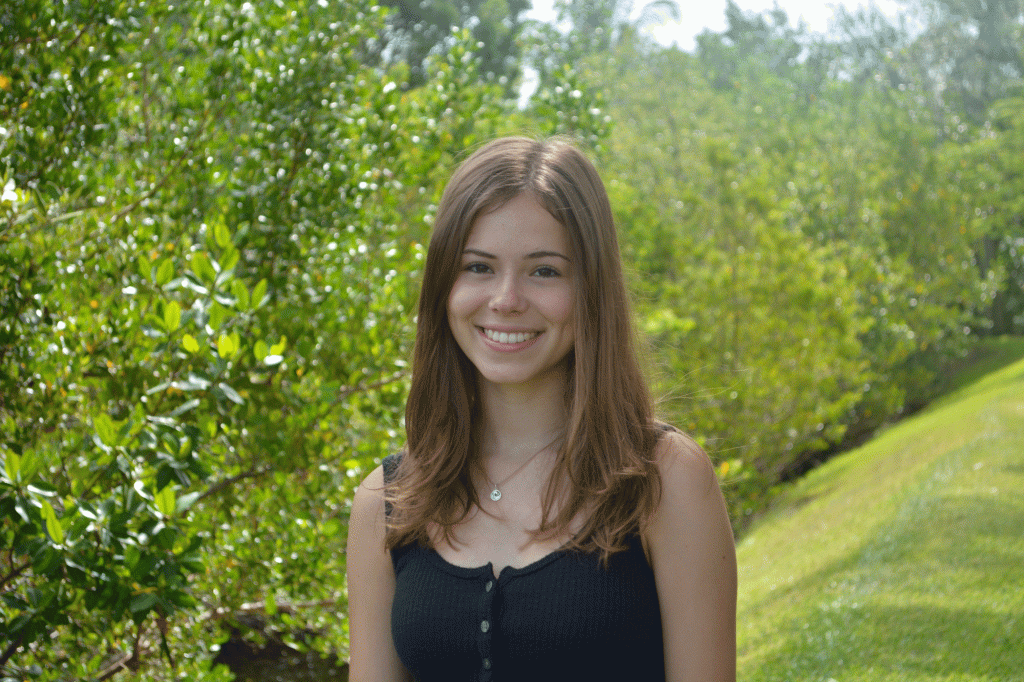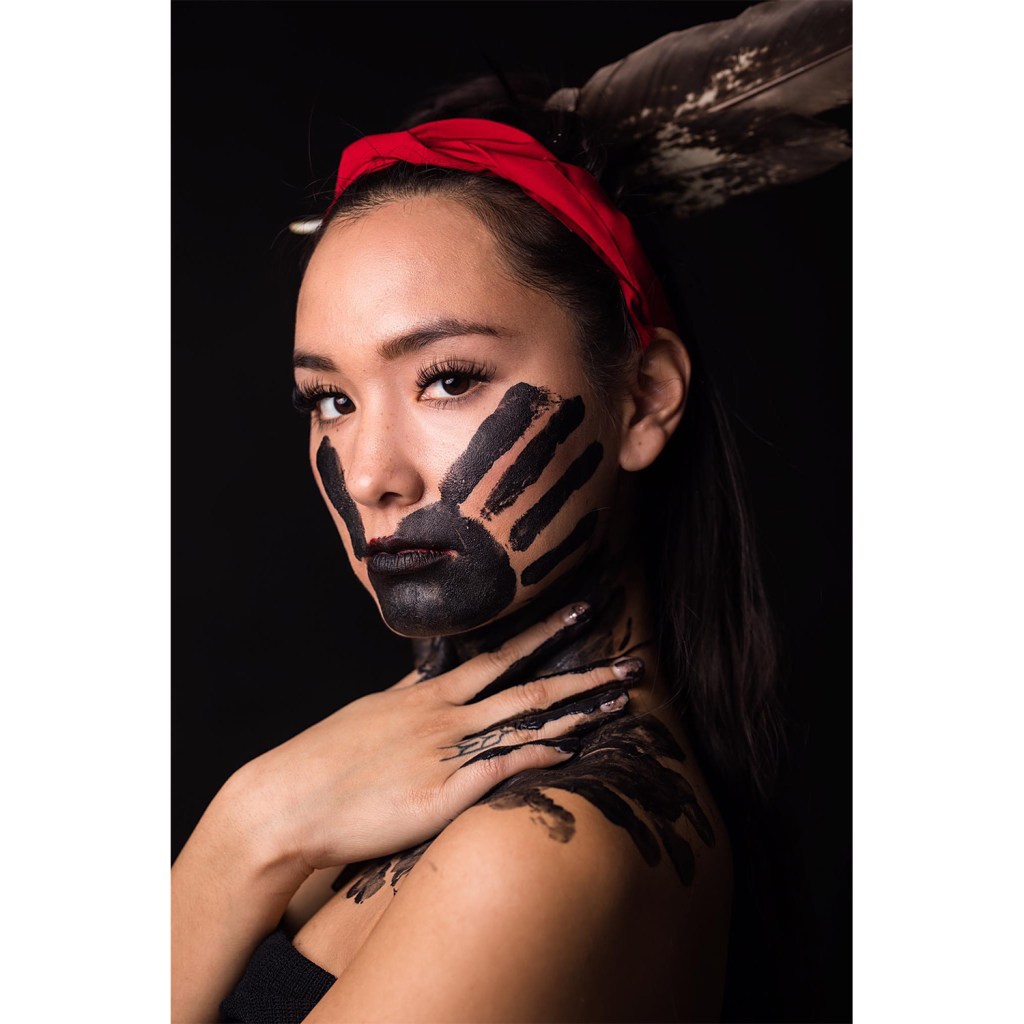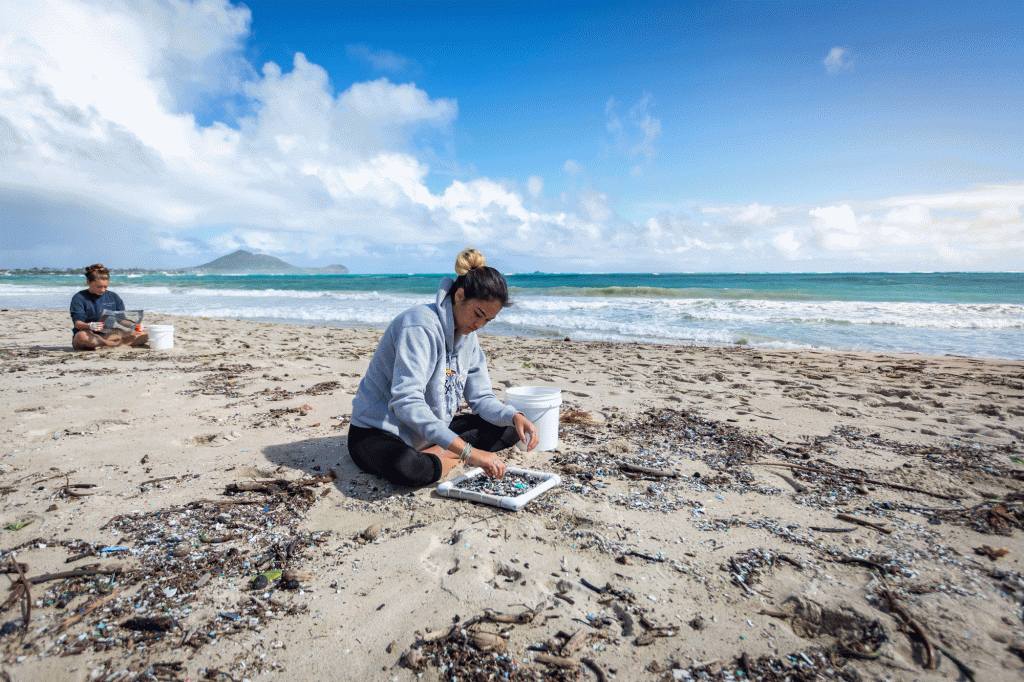Climate change is imminent and action is needed, reports The United Nations. This month’s Intergovernmental Panel on Climate Change report found that the Earth’s land surface air temperature has risen nearly twice as much as the global average temperature since the preindustrial period. Over the past six decades, the report also found, our global population has put a rising number of demands on the Earth’s land and water supply while continuing to contribute to greenhouse gas emissions.
To take action, on September 20 and 27, hundreds of youth-led climate strikes are being organized worldwide, many of which are aligned with the Fridays for Future movement. And on September 23, the United Nations will convene at the 2019 Climate Action Summit in New York. As global leaders strategize how to curb carbon emissions and adopt sustainable development, youth are playing a fundamental role.
Across the United States, teenage and young adult activists from diverse backgrounds are collectively pushing forward solutions for climate change. Here are six leaders steering the climate movement, inspired by their love of recreation and wild spaces.
Michael Charles, 25
- Homebase: Columbus, Ohio
- Identifiers: Citizen of Navajo Nation (Diné), Ph.D. student in chemical and bimolecular engineering at Ohio State University

Photo Courtesy: The American Indian Science and Engineering Society
A good narrative has the power to change minds. At policy forums, 25-year-old Michael Charles tells human stories that illustrate how climate change is specifically affecting Native people across North America; he also brings an Indigenous, spiritual lens to his graduate studies in environmental design.
How he got his start: While completing his bachelor’s degree in chemical engineering at Cornell University in 2013, Charles learned about the Idle No More campaign, founded by four Saskatchewan women, to support the First Nations of Canada, where tribes face ongoing threats from extractive development and a loss of their Indigenous rights to the land.
Charles joined the campaign to help educate students about the industrialization of the land of Native people. But he didn’t stop there. In 2017, Charles applied to work with SustainUs at the U.N. Climate Change Conference in Bonn, Germany. There, at the U.S. People’s Delegation Speak Out, he shared how climate change was specifically impacting Native people in North America.
In December, he’ll attend his third consecutive U.N. Climate Change Conference—this time, he’ll lead the first-ever Indigenous delegation for SustainUs, a youth-led organization that focuses on sustainability and justice. And this Friday, to kick-off the upcoming climate strikes, Charles will be speaking at a protest in his hometown of Columbus, Ohio, to inspire his fellow youth organizers.
Mission: “My goal is to bring real human stories to political spaces,” Charles says. “The SustainUs network keeps us in tune with youth networks that are fighting climate change in the U.S. Whether it’s ballots, pipelines, protests or debates for the Democratic National Convention, we can bring the power of Indigenous youth together.” For his Ph.D., Charles is designing systems to help clean up emissions, integrate nature into engineering and design, and find new ways to measure sustainability initiatives.
Why hope exists: “Young people in the climate movement are willing to understand the intersectionality of how climate change impacts you versus me, and different communities and groups, including Indigenous,” he says.
Vision: “The ideal climate that we’re working toward is to have sensitivity to what’s going on with the land and people around us. We can learn so much from Indigenous cultures and ancestors who knew how to live in harmony with nature before technology,” Charles adds.
Get involved: In 2018, Charles founded Represent, an organization that’s part of Running Strong for American Indian Youth, and awards small grants to support Navajo students’ college-prep resources. Learn more here.
Emma Kavanaugh, 16
- Homebase: Hollywood Beach, Florida
- Identifiers: Ocean conservationist, St. Thomas Aquinas (STA) High School Surfrider Foundation Club Founder and President

Photo Credit: Samantha Kavanaugh
“I don’t want my home town to be taken away from me with rising temperatures and rising sea levels,” 16-year-old Kavanaugh says. As a self-proclaimed ocean conservationist she believes, “Climate change is my future, my brother’s future, and my friends’ future. It’s a personal issue for me. It’s impactful when we make the issue about ourselves. We’re more likely to act and for there to be change.”
How she got her start: Kavanaugh wants to make the public aware of the impending threat of sea-level rise. She’s also passionate about cutting down on single-use plastics. That’s why she founded her school’s Surfrider Foundation chapter, becoming president in 2018 and co-guiding educational meetings with city officials and business owners to make a case for cutting down on disposable culture and keeping waste off local beaches.
That same year, she joined the Delta Airlines Youth Advisory Council to help guide the airline’s efforts to eliminate single-use plastics, among other sustainability initiatives. And in July 2019, she attended the This is Zero Hour: Youth Climate Summit, in Miami, where she helped host the table for Oceana, an organization that seeks to restore biodiversity to the world’s oceans.
Mission: “I wanted to get involved with the climate change movement because I was really motivated to help with ocean conservation,” Kavanaugh says. “I also try to do little changes in my life like avoid meat or animal products, and to carpool.”
Why hope exists: “Climate change will affect my generation the most, and we’ll be the witnesses to climate impacts. When you’re youthful, you have a passion to act against something that feels wrong for you,” Kavanaugh says.
Vision: In the future, “the whole world will need to be more aware, conscious and live in harmony with the environment. A healthy, stable climate, that’s not heavily impacted by humans and ignorance, is made possible through growing peoples’ awareness,” she says.
Get involved: Encourage your favorite local restaurant to join Surfrider’s Ocean Friendly Restaurants program.
Kai Jones, 13
- Homebase: Victor, Idaho
- Identifiers: Middle school student, skier, surfer

Photo Credit: Todd Jones
Young outdoor endurance athletes can be an inspiration to watch and listen to. Thirteen-year-old Kai Jones uses his growing big-mountain skills on skis as a conduit to spark conversation about climate change.
How he got his start: “I was born into climate activism, with Jeremy Jones [professional snowboarder and founder of Protect Our Winters] as my uncle, but I really started learning more and getting involved [in the climate movement] three seasons ago, when I was 11 years old,” Kai says. During his sixth-grade study hall at Teton Middle School, Kai began researching everything he could about climate change. “I learned about greenhouse gases that are destroying the environment and about oil companies that are impacting the planet. I learned about solutions like electric cars, solar panels, wind energy and dam energy. These are really simple things but helped me get interested in global warming,” he recalls.
In April 2018, Kai was being interviewed by Teton Gravity Research (TGR) for his breakout segment: He was the youngest skier to be featured in a TGR film, ever. The filmers—including his dad, Todd Jones, who is also a cofounder of TGR—asked, “What scares you the most?” Rather than talking about steep terrain, Kai surprised the film crew with his introspective response: “I started talking about the long-term state of snow, global warming and the environment,” he says. After the interview, Todd encouraged his son to become more involved with Protect Our Winters (POW) to work toward their shared goals, and Kai decided to begin using his platform and voice for change.
In fall 2018, Kai shared a video clip on his instagram (@kaijonesski), encouraging his followers to vote in the 2018 U.S. midterm elections for candidates supporting climate change policies. The response was overwhelming, with close to 12,800 views on Kai’s Instagram account alone.
Mission: Kai is now a POW ambassador and he uses his social media presence—he currently has about 27,000 Instagram followers—to help educate outdoor recreationists about climate change. “I research events related to global warming, earth or climate change, and I share a big social media post,” he says.
Why hope exists: “Some of this generation doesn’t care to get involved with politics at all, but those who are involved are more educated [than previous generations] and are basing their knowledge off of research. That’s good, because it helps us become a stronger [collective] mind in the big picture,” Kai says.
Vision: “I envision a future climate completely based on renewable energy, with long winters with bigger waves and lots of outdoor enthusiasts,” Kai says. “We can get there by standing up as one and working toward killing all nonrenewable greenhouse gasses and switching to renewable energy.”
Get involved: To learn more about POW, go to their website. You can also read more about Kai here.
Maka Monture Päki, 25
- Homebase: Anchorage, Alaska
- Identifiers: Tlingit, Mohawk, Program Coordinator of the United States Arctic Youth Ambassador Program

Photo Credit: Amy Bell
United voices can accelerate climate solutions. Peer-to-peer education is 25-year-old Maka Monture’s primary tool for helping to shape a sustainable future for the rapidly changing Arctic.
How she got her start: Growing up in Yakutat, Alaska, Monture Päki cut her teeth as a high-school environmental activist with the Alaska Youth for Environmental Action, which trains youth leaders to tackle big environmental issues. But it wasn’t until after she graduated from Northern Arizona University in 2015 that she began co-developing the leadership development organization she now leads, the U.S. Arctic Youth Ambassadors Program (AYAP), which provides a platform for Alaskan youth to build awareness of climate change at home and abroad. Through AYAP, “The youth ambassadors share their local perspective, priorities, and solutions regarding how to sustain communities, cultures, and the environment in a changing Arctic,” Monture Päki says. She, like Kai, uses social media (@makamonture) to raise awareness about the issues she cares about.
Mission: “In Alaska, and for many Indigenous tribes across the world, the trail of broken land treaties is a legacy of the injustice of colonization. My grandparents instilled within me a responsibility to my people and a protection for Indigenous land,” Monture Päki says. “My love for my tribe and for the future generations to come motivates me to be an advocate for the land—it deserves us to speak as stewards for it. As indigenous youth, the land doesn’t belong to us, we belong to the land,” she adds.
Why hope exists: Monture says the rising generation is motivated to be proactive, because of the firsthand experiences they’re having with environmental change: “Youth in coastal rural Alaska have experienced more accelerated coastal erosion and strong winter storms as a result of climate change in their young lives than the generation before them,” Monture Päki says.
Vision: “I envision a climate where we give back to the earth as much as what is taken. Some of the Māori Tribes in Aotearoa/New Zealand have successfully fought for human rights status for one of the forests and one of the rivers. Imagine a world where there was the reality everywhere,” she adds.
Get involved: To learn more about the Arctic Youth Ambassadors Program, visit their website.
Tabatha Knudson, 18
- Homebase: Honolulu, Oahu
- Identifiers: Co-President of Surfrider Manoa Club at University of Hawaiʻi at Mānoa

Photo Credit: Andrew Alvarado
Growing up in Oahu, Hawaii, Tabatha Knudson spent nearly everyday in the water. “As I grew older, I started to see the devastating impacts of climate change: ocean acidification, development, and plastic pollution,” she says. Now, 18-year-old Knudson leverages policy creation to remove single-use plastic across her local university and city.
How she got her start: “In high school, I had an amazing, empowering teacher who was an advisor for an environmental club I was in. He inspired me to get involved, and taught me that I have the power to create change—and that we’re the future,” she says.
From there, she joined the “Wipeout Crew,” her local high school Surfrider Foundation chapter, where she learned to advocate for state and local climate initiatives, and how to plan advocacy events. During her first year of college, in 2018, Knudson served as an events coordinator for Surfrider’s student chapter at the University of Hawaiʻi at Mānoa , where she hosted gatherings for community leaders and professors to educate about issues ranging from single-use plastic to climate change.
Today, as the club’s co-president, Knudson is leading a campaign to ban plastic straws on the University of Hawaii at Manoa campus. Also through Surfrider, she’s advocating for legislation known as Bill 40, which supports the phasing out of single-use plastics in the city of Honolulu. When she’s not organizing events or championing public policy, Knudson presents to her local high school on topics like sustainability and activism, to inspire the next group of youth change-makers. Knudson plans to attend a Honolulu Global Climate Strike on September 20, and hopes to join on September 27, too.
Mission: “One of the obvious reasons that climate change will be detrimental to our lives and nature is that everyone and everything is at the threat of extinction. The biggest drive for me is to fight for sustainability, which is not only environmental, but also related to our spiritual, emotional and mental well-being,” Knudson says.
Why hope exists: “Climate change is a great opportunity for us to come together as a community to fight it, which is in itself a great motivator. This fight can strengthen community for years to come,” Knudson says. “The world is in this political turmoil with people standing up to political, social, environmental injustices, and broken power systems. Youth are empowered by these movements to be activists.”
Vision: “We need to push for social and political changes away from individualistic and anthropocentric mindsets to have more Indigenous knowledge systems, where we recognize that all living things and nonliving things inherently need respect and to be treated equal. We need to build our community, strengthen our relationships with each other, and come together as one force that can help create a sustainable future through empowerment, education, and celebration,” Knudson says.
Get involved: Local to Honolulu? Discuss and vote for Bill 40, and join the student-and-community beach cleanups.
Levi Draheim, 12
- Homebase: Indian Harbor Beach, Florida
- Identifiers: Juliana v. United States plaintiff, Youth Climate activist, homeschooler, swimmer

Photo Credit: Kilby Photo
Levi Draheim’s story reveals that even the youngest recreationists can hold the federal government accountable for climate protection. Five years ago, now 12-year-old Levi Draheim became the youngest plaintiff in Juliana v. United States.
How he got his start: “I’ve always been involved with the environment and protecting it, since I was 4 years old. But I was about 7 years old when I got involved with the lawsuit,” Draheim told the Co-op Journal. “We’re asking the U.S. government to protect our rights for a clean, sustainable, livable planet. We’re asking for the government to put a science-based climate recovery plan in place to protect our future,” he says.
The suit was originally filed in 2015 during the Obama administration, and states that by pursuing policies that contribute to climate change, the United States government violated young people’s constitutional rights to life, liberty and property. In the past year, when Drahaim wasn’t working on the case, he spoke publicly at Fridays for Future events in Oregon and Florida, which he says he plans to keep doing. This Friday, Draheim plans to attend the Global Climate Strike in Washington, D.C.
Mission: “Being a climate activist is literally one of the only things we can do to protect our future,” Draheim says. “If there isn’t action taken, then it’s very possible I won’t have a future or a home on this planet. This is to protect my future and future generations’ futures,”
Why hope exists: “If we all completely cut down and stop using fossil fuels, and instead use renewable energy sources, we could start moving in the right direction,” Draheim says. On an individual level, he collects plastic water bottles at his swim team meet-ups and, in partnership with a local Surfrider Foundation chapter, plants beachgrass on sand to help prevent dune erosion.
Vision: “In reality, if we continue at this rate, where I live will not be here. It’s very possible that many islands will not be here, because of climate change and sea-level rise. I would like to have the barrier island where I’ve lived my whole life to still be here. I would like all of the lakes and springs to be here, how they are now—or perhaps even better—so that I can show my children where I lived and grew up,” Draheim says.
Get involved: Visit Global Climate Strike to learn about and participate in a protest near you.
Editor’s note: Protect Our Winters (POW), Surfrider Foundation and the Center for Native American Youth at the Aspen Institute are nonprofit partners of REI. Since 2015, REI has awarded POW with $75,000 in grants. REI contributions totaling more than $180,000 have helped advance the aims of the Center for Native American Youth since 2018. And Surfrider Foundation has been the beneficiary of contributions totaling nearly $70,000 in grants from REI since 2010.


